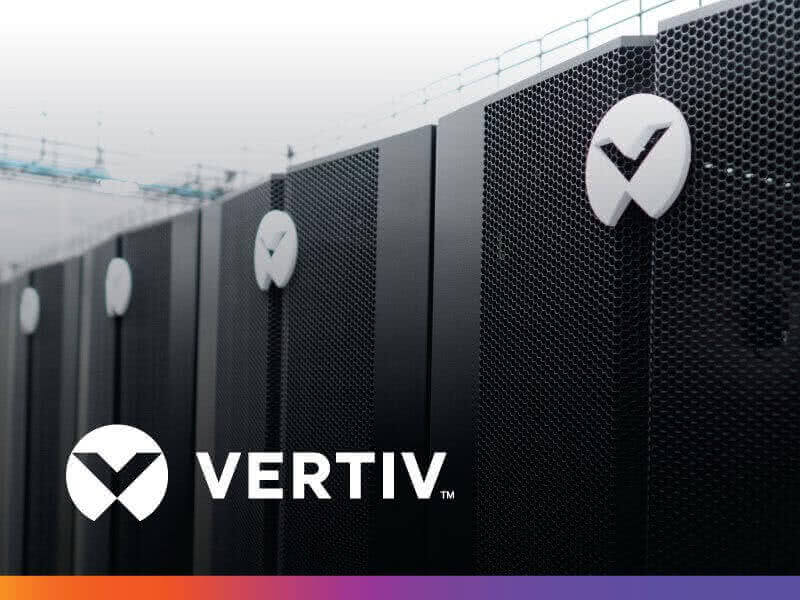Speed of deployment expected to become increasingly critical differentiator
Columbus, Ohio [Jan. 15, 2020] – As the world charges into 2020, organizations increasingly will forego the enterprise-or-cloud debate that dominated C-level conversations in recent years in favor of hybrid architectures that incorporate public and private cloud models and edge assets around a reconfigured core. This evolving approach to managing data and computing resources is one of five emerging 2020 data center trends identified by experts from Vertiv, a global provider of IT infrastructure and continuity solutions.
The trending hybrid architectures will allow organizations to maintain control of sensitive data while still meeting soaring demands for more capacity and increased computing capabilities closer to the consumer. As connectivity and availability become conjoined concepts in this new data ecosystem, an increasing premium will be placed on seamless communication from core to cloud to edge.
“A new equilibrium is emerging in the data center space as the industry wrestles with capacity challenges and advanced applications that are forcing significant changes to data centers of all shapes and sizes,” said Vertiv CEO Rob Johnson. “At the same time, speed of deployment is increasingly becoming a tipping point in technology decisions and will likely shape investment and innovation in the space as we head into 2020. This will manifest itself in many ways, but the message to data center equipment providers is clear: The status quo is not acceptable.”
Additional information on hybrid computing and other trends identified by Vertiv experts is included below.
- Hybrid architectures go mainstream: While cloud computing will continue to be an important part of most organizations’ IT strategy, we are seeing a subtle change in strategy as organizations seek to tailor their IT mix and spending to the needs of their applications. As we see more of these hybrid architectures, it becomes increasingly clear that the enterprise data center is alive and well, even if its role is changing to reflect a mix that best serves modern organizations.
- Speed of deployment as the new arms race: As capabilities across technologies and systems flatten out, data center and IT managers will increasingly turn to other criteria for selecting equipment. Cost is always a separator, but more and more the decision will depend on how quickly assets can be deployed. When all other factors are close, any advantage in speed of deployment and activation can be the determining factor. This is especially true as computing continues to migrate to the edge in today’s distributed networks, where delivery delays mean lack of service – and revenue.
- Average rack density remains static … but: Although average rack density is likely to reflect marginal increases at best, the surge in advanced applications and workloads related to artificial intelligence (AI), such as machine learning and deep learning, will make pockets of high-performance computing necessary and more common. Vertiv experts anticipate early activity in this space in the areas of defense, advanced analytics and manufacturing in 2020, laying the foundation for more widespread adoption in 2021 and beyond. These racks so far represent a miniscule percentage of total racks, but they nevertheless can present unfamiliar power and cooling challenges that must be addressed. The increasing interest in direct liquid cooling is a response to high-performance computing demands.
- Batteries pay it forward. In 2016, Vertiv experts predicted lithium-ion batteries would begin to find a home in the data center, and that has proven to be true as lithium-ion today holds a significant share of the UPS battery market. That share is growing and starting to extend to edge sites, where the smaller footprint and reduced maintenance requirements are a natural fit. The next step is leveraging the flexibility of lithium-ion and other emerging battery alternatives, such as thin plate pure lead (TPPL), to offset their costs. As we move into 2020, more organizations will start to sell the stored energy in these batteries back to the utility to help with grid stabilization and peak shaving. Expect this to be an important part of larger conversations around sustainability in the data center industry.
- Global cross-pollination: The U.S., particularly Silicon Valley, has been the epicenter of the digital universe and this generation of data center development, but innovation happens everywhere. A parallel digital ecosystem with notable differences is emerging in China. Data centers across Europe and in other Asian and South Pacific markets, such as Australia, New Zealand and Singapore, are evolving and diverging from traditional practices based on specific regional issues related to data privacy and controls and sustainability. For example, General Data Protection Regulation (GDPR) compliance is driving hard decisions around data management around the world. Those issues, and more vigorous attention to environmental impacts, are leading to new thinking about hybrid architectures and the value of on-premise computing and data storage. In China, some data centers have been running 240V DC power into manufacturer-modified servers to improve efficiency and reduce costs. DC power has long been a theoretical goal for U.S. data centers, and it’s not hard to envision other parts of the world adopting the model being embraced today in China.
Vertiv last month announced it will become a publicly traded company through a merger with GS Acquisition Holdings Corp (NYSE: GSAH, GSAH.U, GSAH WS). The transaction is expected to close in the first quarter of this year, at which point Vertiv’s stock will trade under the ticker symbol NYSE: VRT. For more information on that transaction, the 2020 data center trends or any data center solutions from Vertiv, visit Vertiv.com.
About Vertiv
Vertiv brings together hardware, software, analytics and ongoing services to ensure its customers’ vital applications run continuously, perform optimally and grow with their business needs. Vertiv solves the most important challenges facing today’s data centers, communication networks and commercial and industrial facilities with a portfolio of power, cooling and IT infrastructure solutions and services that extends from the cloud to the edge of the network. Headquartered in Columbus, Ohio, USA, Vertiv employs around 20,000 people and does business in more than 130 countries. For more information, and for the latest news and content from Vertiv, visit Vertiv.com.
CONTACT
Katie Evans
T +44 7739 502492
E katie.evans@madebychameleon.com






